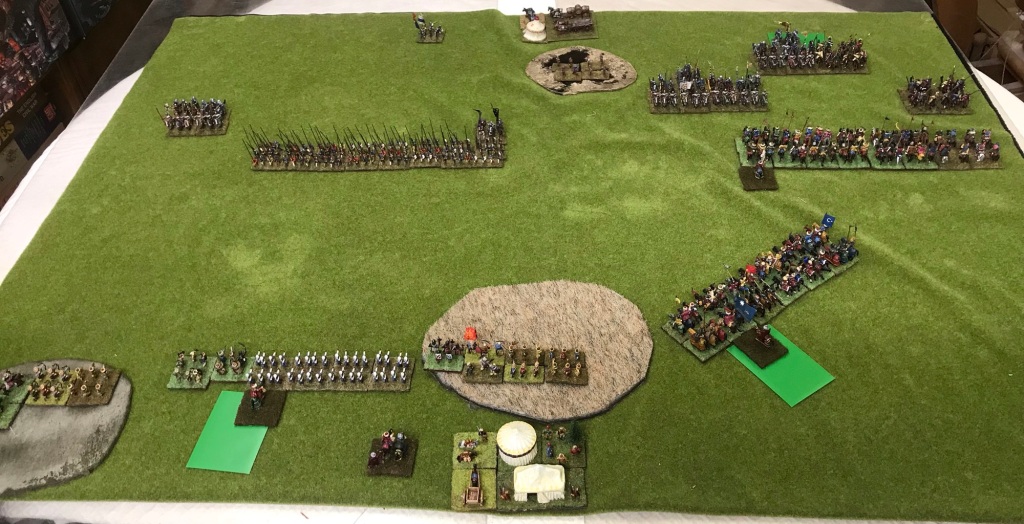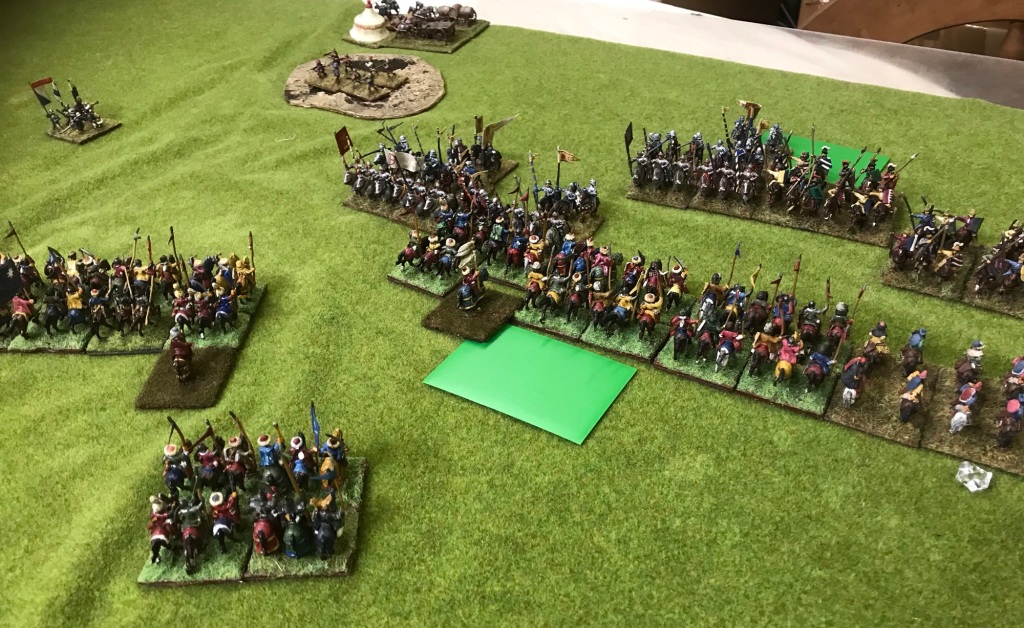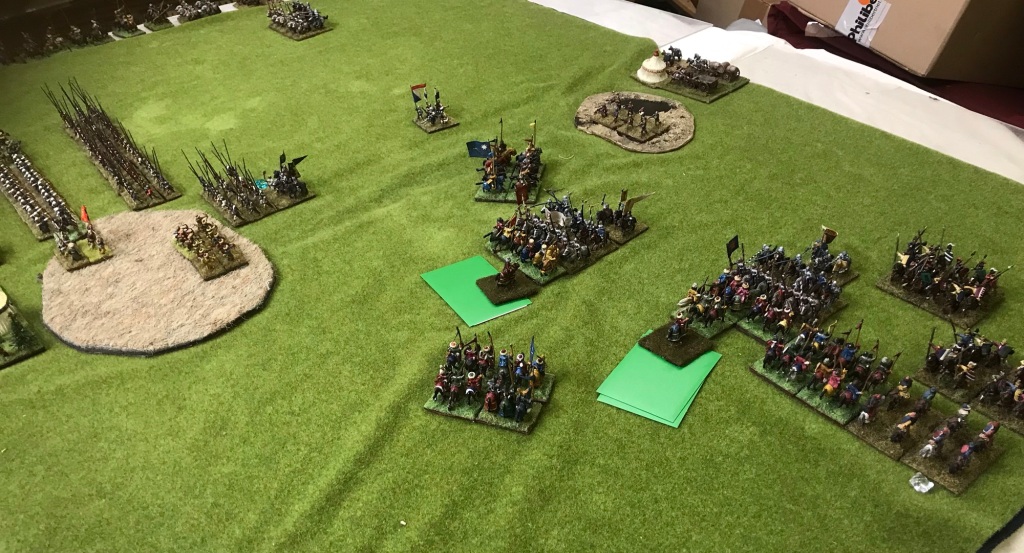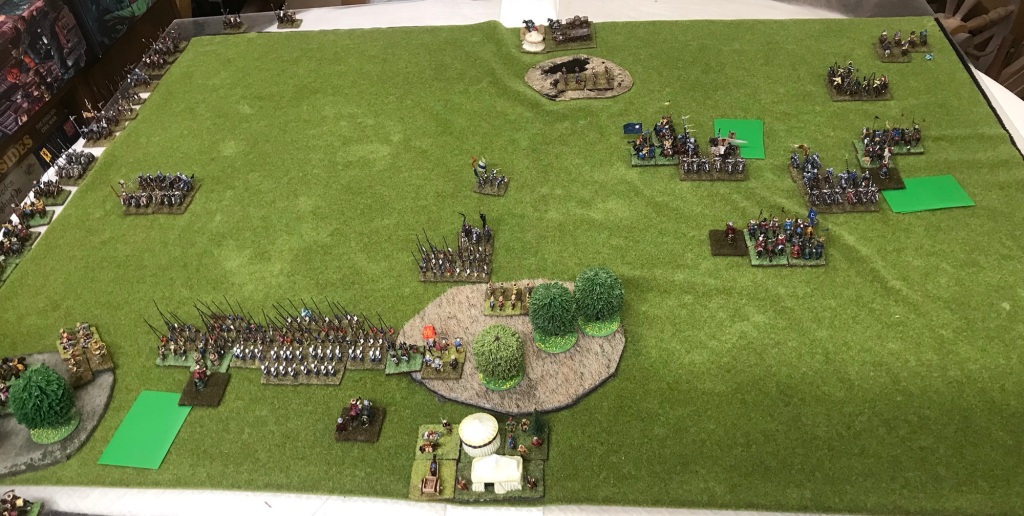Mortem et Gloriam is the precursor of Renatio et Gloriam. Both share many mechanisms and overlap in the periods covered by at least 20 years; depending on the lists chosen. Ottomans and Venetians during the Italian Wars period fit into this gap so why not try out a similar match up to that already described for Renatio et Gloriam? This time it will run with the Magna version of Mortem et Gloriam that requires less bases and a smaller playing area. There is no public version of Magna for Renatio and Gloriam although it is clear from web references that some similar set does or did exist. The rumour being that the designers are having issues fitting the strict Renatio and Gloriam formation base sizes into the smaller format. The width and depth of bases within a unit in Mortem and Gloriam being much looser. There are enough outline rules within the free PDF introduction to Mortem and Gloriam for anyone wishing to make a start. A look at similar Mortem and Gloriam Maximus and Magna army lists also gives some hints on how formations might be modified.
The Mortem et Gloriam print on demand Magna and Maximus rules are being used. In general these are pretty well produced but the web links from a digital version have been left in. Obviously these can no longer be clicked on but are still in an inconsistent font colour and have not had the useless links replaced with references to sections of the printed rules. The QRS within the printed rules are also sized far too small to make out. The downloadable versions on the MeG site on the other hand fit on the page and can still be read. A final minor point is that some of the text clearly refers to contents that came with the older boxed version of the rules. Anyone starting MeG without a rough idea of what is going on will also need the free Introduction to MeG PDF. It contains a lot of forgettable fluff but also key details on basing and the table sizes needed for 15mm Magna games.
Unit formations are less strictly defined in MeG than in ReG and the lists will be needed to not only work out how many troops to field but what size units are needed. In full, Maximus, MeG mounted units are in 4s and 6s but in Magna they are in 4s (the same size as for regular ReG). Magna infantry groups are likely to be smaller than their ReG equivalent. The Venetian Pike for example lose out. They are in 12s (3 files of 4) in ReG but drop to 6s in Magna here. These will be running as 2 files of 3 and oddly never able to claim an additional +1 on charging while in 4 ranks. MeG bases are lost on 2 hits rather than 3 in ReG so with smaller or equal size units but fewer hits we might see units lasting less long.
The MeG lists are free (unlike in ReG) and different for Maximus and Magna although the same army builder is used but with a different points total as the Magna generals are a fraction cheaper. For example the Venetian list running here is 7,940 points. If it were Maximus it would be 8,506 at the same base count although in practice it will run even more as some of the units will need more bases in Maximus. Maximus usually runs at 10,000 points and Magna at 7,000 to 8,000 points. ReG armies are 9,000 to 10,000; the deciding factor seems to be that later armies are more deadly and will run at fewer points (although the total will need to match up for a specific game).
It might be expected that with similar rules and subject matter these lists would look much the same as with ReG. This is not the case. The Ottoman Janissaries are not so well trained and have swapped their muskets for bows. The high quality if poorly armed big Ottoman mob units are also missing. The Venetians do not exhibit as many differences except they have professional generals not inspirational as in ReG. The restrictions on how many pike can be fielded in each command and the additional cost to play cards that command them are also absent in MeG. The ReG restrictions on close order infantry in flank sectors are also missing in MeG although a secure flank can be set which will affect the terrain that can be set up in it.
For both lists troop types chosen have been minimised to keep the game simpler. There should be 2 woods in the Ottoman (bottom of image) deployment but in the excitement the trees are missing. There is also a river just off to the left side of the table.

The armies appear quite far apart but with the aid of double moves quite quickly come to just outside 4 base widths away from each other. The pike blocks can move at a speed that is illegal in ReG because Keil pay an extra level of card to move in ReG. Formed units like the Venetian Keil need a ‘Red’ to double move but the Keil cannot pay a card above ‘Red’ to do that.

Turn 2 sees some combat amongst the cavalry. Shooting is based on a base of a ‘White’ die in MeG but a base ‘Green’ (better) die in ReG. There are also fewer opportunities where a ‘S’ result has any effect. The die colour rolled can go up and down but the bottom line is that MeG shooting will tend to be less effective.

Turn 3 sees more cavalry combat and the pike line coming into charge range. The Venetian horse is better than the Ottoman but not massively so and these units of 4 stands are very brittle. 2 units of cavalry mutually destroy each other, the morale effects on neighbouring units are thankfully limited.

The Venetian pike are finally in combat. On the right of the pike line one unit holds back to pin the Ottoman units in the wood unless they fancy coming out to fight. The Ottoman horse bring numbers to bear in the cavalry fight but are losing bases.

The Ottomans nudge a unit of bows out of the safety of the woods to shoot into the flank of the Venetian pike. This is a dangerous mistake as the shooting has no effect and a Venetian Condottierre unit moves up to sort them out. Moving forward with a wheel is a relatively simple action. Alas the opportunity to wheel back does not exist and the Dellis to the side in the woods prevent any other cunning moves to get back to safety. The right flank is getting to be a bit of a mess and the Venetians are running out of cavalry.

The Ottomans surround a unit of Venetian Condottierre and wipe it out. They are close enough to charge the Venetian camp with Delli cavalry but lack a Green card to do so. It would all have been too late anyway. The last Condottierre unit routs the exposed Ottoman bow and the leftmost Venetian Keil breaks the Janissaries to their front. A wave of morale checks routs more Janissaries and the Ottoman army as a whole.

It all worked out much as in Venetian against Ottoman Renatio et Gloriam games. The Ottoman horse will win out but can their own foot hold out long enough for that? With smaller units and fewer hits to kill a base infantry combat is less likely to drag on. As the overall count of units is lower than in the full game the armies could get away with lower ranking commanders. In many cases here the generals had more than enough cards but these were not good enough to do everything. This is a factor of card distribution not number so would not work through with more units but better commanders.